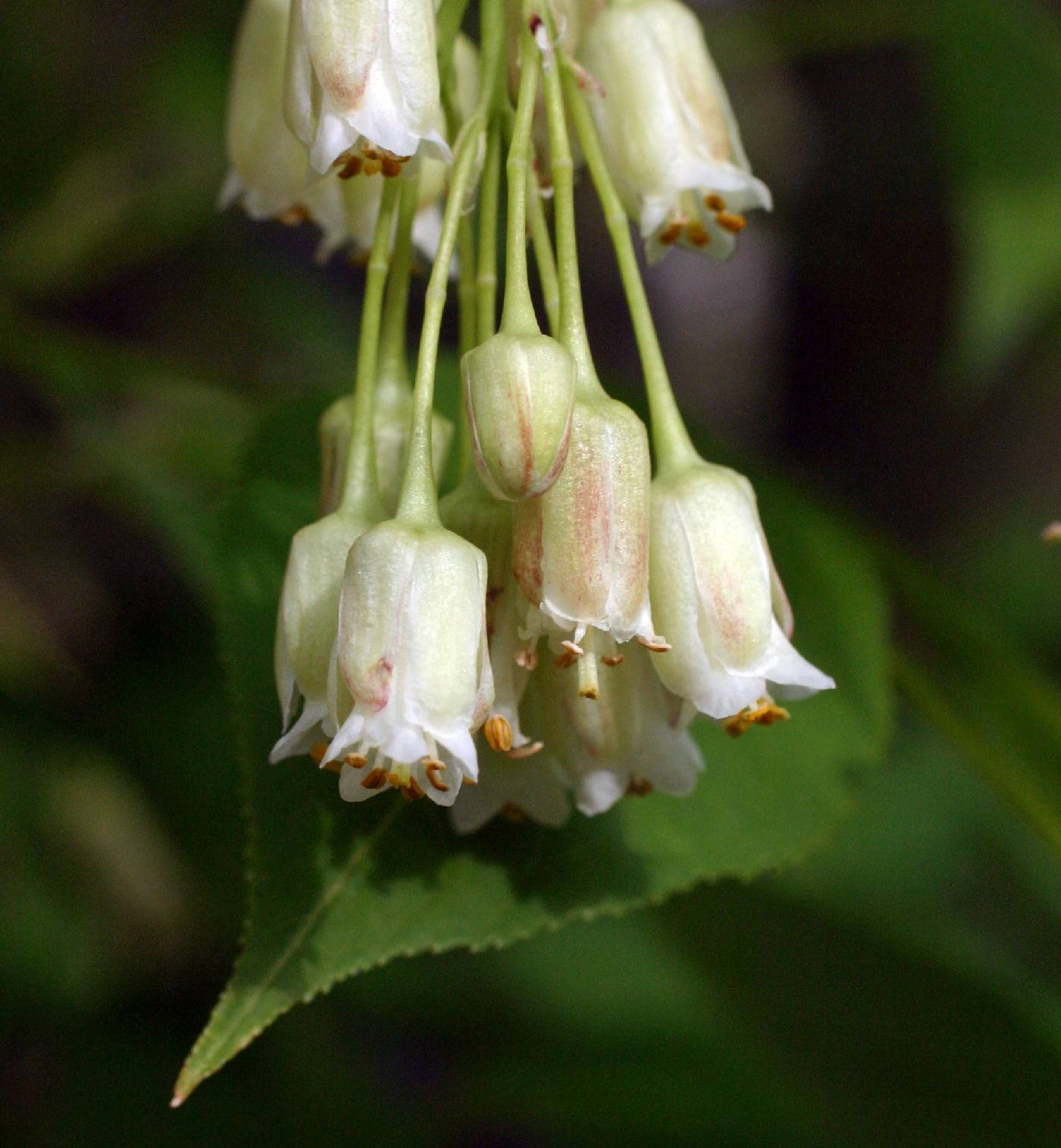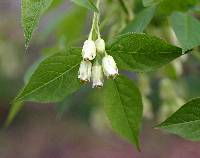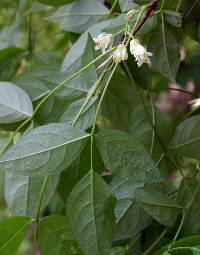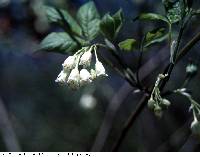|
|
|
|
Family: Staphyleaceae
American bladdernut
|
Shrub to small tree to 5 m tall Leaves: opposite, long-stalked, compound with three leaflets (trifoliate). Flowers: hanging from stalked clusters on previous year's growth, 8 - 10 mm long, bell-shaped, with five white petals and light green sepals almost as long as petals. Fruit: a bladder-like capsule, solitary or in small hanging clusters, green changing to brown, 3.2 - 6.4 cm long, inflated, three-lobed, persisting into winter. The one to four seeds are yellowish brown, 0.6 cm long, rounded but slightly flattened, hard, shiny, and rattle inside the capsule. Bark: grayish brown and smooth, developing white fissures and flaking with age. Twigs: flexible, reddish to greenish brown, smooth, usually striped. Buds: sometimes stalked, egg-shaped, smooth. Terminal buds usually absent. Leaflets: stalked with end leaflet stalk being the longest, bright green above, paler beneath, 5 - 10 cm long, 3.2 - 5 cm wide, egg-shaped to elliptic with a tapered base and pointed tip, sharply and irregularly toothed, surfaces hairy with hairs limited to veins of upper surface. Form: upright, highly branched, suckering from the roots to form thickets. Similar species: The trifoliate leaves of Staphylea trifolia may be mistaken for Toxicodendron radicans or Ptelea trifoliata ssp. trifoliata. Toxicodendron radicans is a vine that has alternate leaves with non-toothed and sometimes lobed margins. Ptelea trifoliata ssp. trifoliata has alternate leaves with non-toothed to finely toothed margins and very short-stalked leaflets. Flowering: mid April to early June Habitat and ecology: Locally common on slopes in mesic woods and in wooded floodplains. Occurence in the Chicago region: native Etymology: Staphylea is from the Greek word, staphyle, meaning cluster, which refers to the hanging flower cluster.Trifolia comes from the Latin words meaning "with three leaves," referring to the trifoliate leaves. Author: The Morton Arboretum Erect shrub to 5 m, with striped bark; lvs long-petioled, 3-foliolate, the lfls oblong to elliptic or ovate, 5-10 cm, serrate, the terminal one long-stalked, the lateral sessile or short- stalked and often oblique at base; infls 4-10 cm (peduncle included); fls long-pedicellate, greenish- white, campanulate, 8-10 mm; fr 3-lobed, 5 cm; 2n=78. Moist woods and thickets; s. Que. to Minn., s. to Ga., w. Fla., and Okla. May. Gleason, Henry A. & Cronquist, Arthur J. 1991. Manual of vascular plants of northeastern United States and adjacent Canada. lxxv + 910 pp. ©The New York Botanical Garden. All rights reserved. Used by permission. |






